Riviera Maya 2013
1 – Playa del Carmen – Beach at Playacar and
2 – Playacar Ruins
It was the coldest winter that I’d experienced in Baja. The dream of warmth in the Yucatán Peninsula drew me to the Riviera Maya in January 2013. After flying into Cancun, my first stop was Playa del Carmen to visit a friend with a comfy room just for me.
It was there that I started a watercolor sketchbook and travelogue.
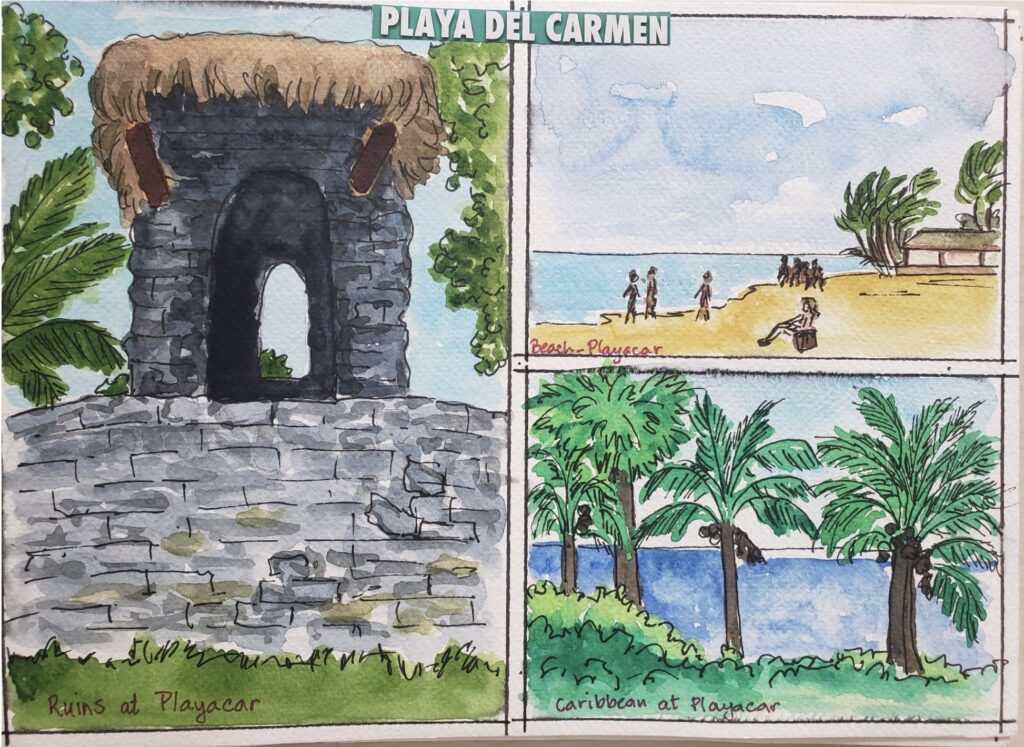
A jungle path took me to the ancient Playacar Mayan ruins and then on to a Caribbean beach with clear turquoise water and soft sand.

A strangler fig tree led me down the path to the beach and the various tourist-oriented beach lounges with food and beverage service.
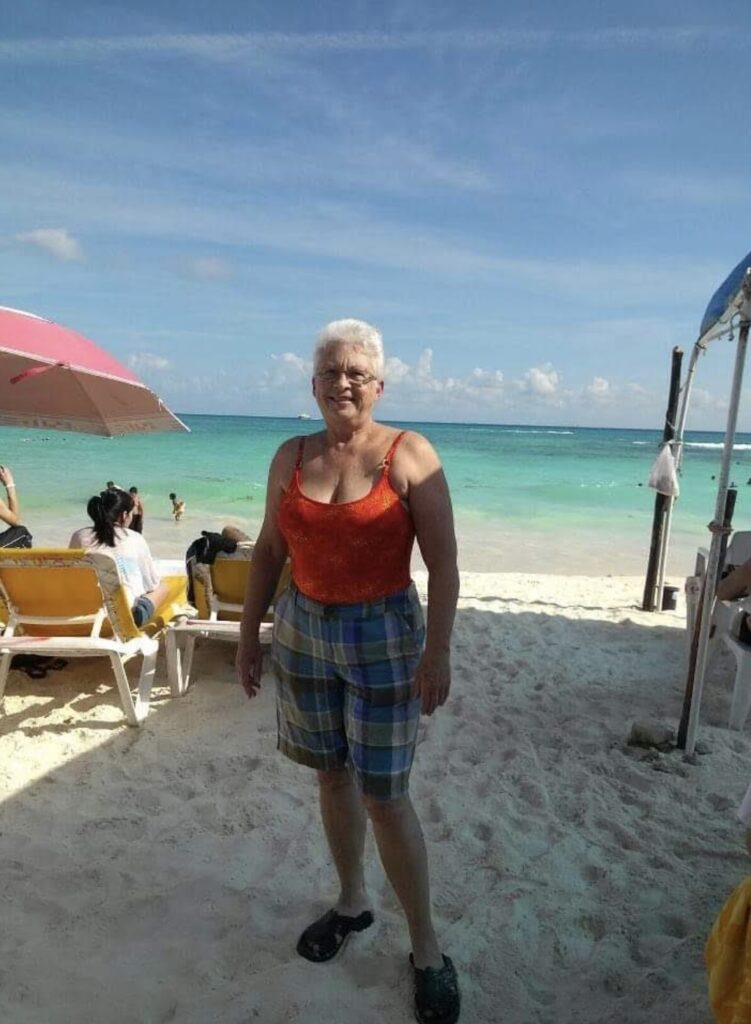
The warmth and beauty of the clear Caribbean put a smile on my face.
3 – Xaman-ha Aviary in Playa del Carmen
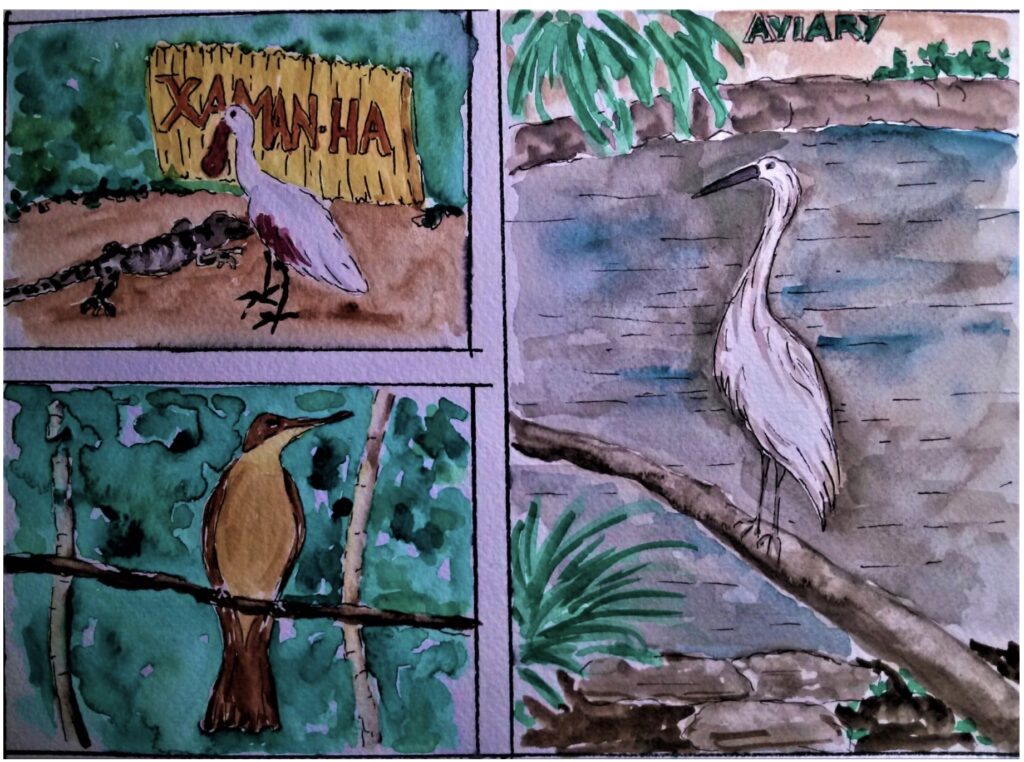
The Xaman-ha Aviary was within walking distance and I was met at the entrance by a roseate spoonbill and a Caribbean iguana. I entered a magical world of tropical birds and lush vegetation.
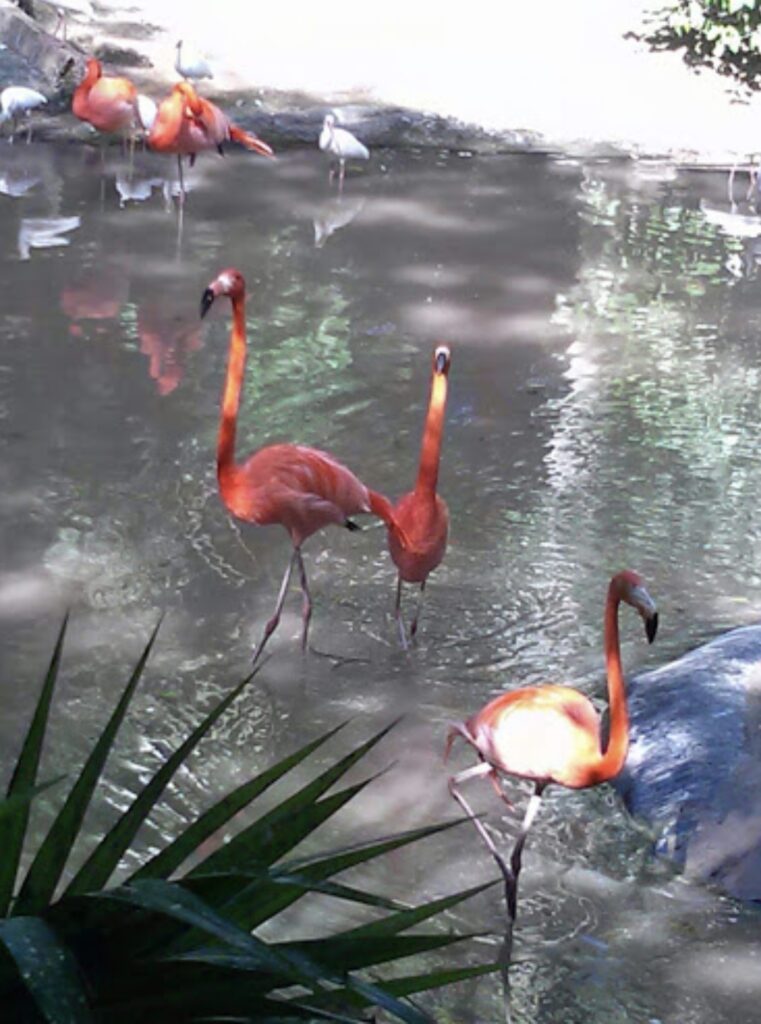
The plentiful flamingos honked like crazy and sometimes marched in unison.
4 – Next stop Tulum and Zamas Hotel
I took a colectivo (shuttle van) from Playa del Carmen into the town of Tulum. Then a taxi delivered me to Xamas on hotel row. It was an eco-hotel located on a Caribbean beach with a more turbulent, milky turquoise sea.
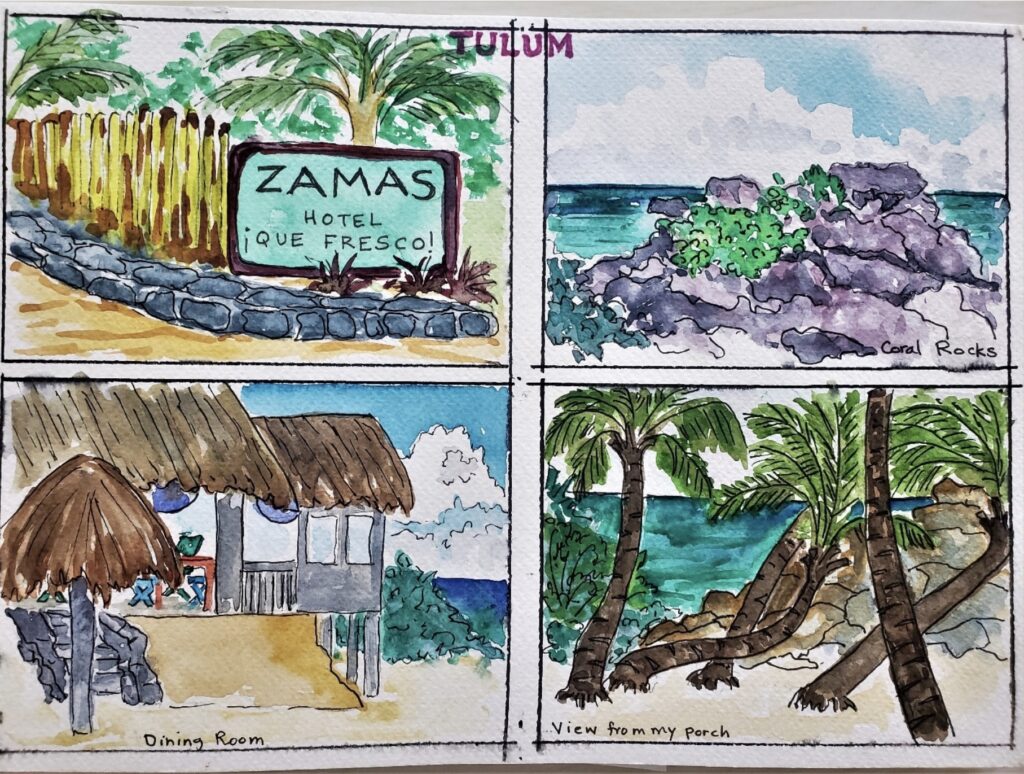
Xamas was called an eco-hotel because they depended on the stiff breezes off the Caribbean and intense sunshine for wind and solar power. The room was round with abundant sunlight and air and was constructed of local materials. I felt nested in nature.
The beach was great for lounging and painting in my watercolor sketchbook. I enjoyed watching the local brown pelicans divebomb into the sea for their food.Palapas (shelters with a roof of thatched palm fronds) were a ubiquitous construction method in the Caribbean.
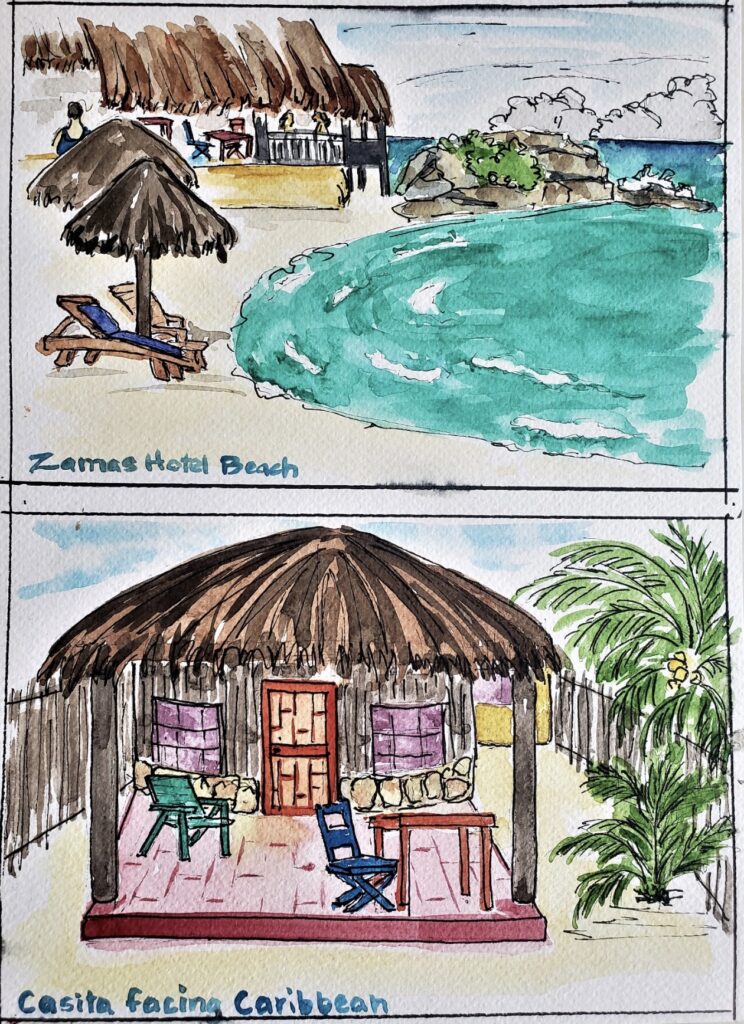
The beach was great for lounging and painting in my watercolor sketchbook. I enjoyed watching the local brown pelicans divebomb into the sea for their food.Palapas (shelters with a roof of thatched palm fronds) were a ubiquitous construction method in the Caribbean.
5 – The Mayan Ruins of Tulum
The iconic Mayan ruins of Tulum were within walking distance but it was way too hot for that, so I took a taxi.
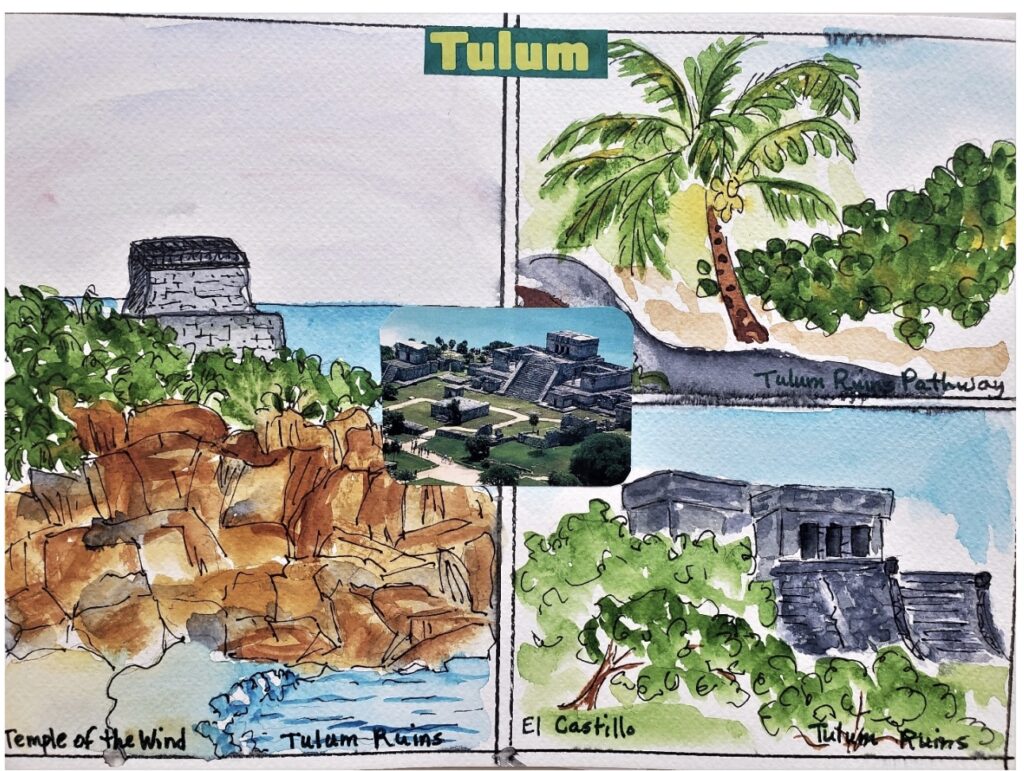
Well-kept pathways led to the various temples. It was once an important trading hub, exporting jade and obsidian. Because this settlement was built on seaside cliffs, it was easily defensible.The views of the Caribbean were stunning.
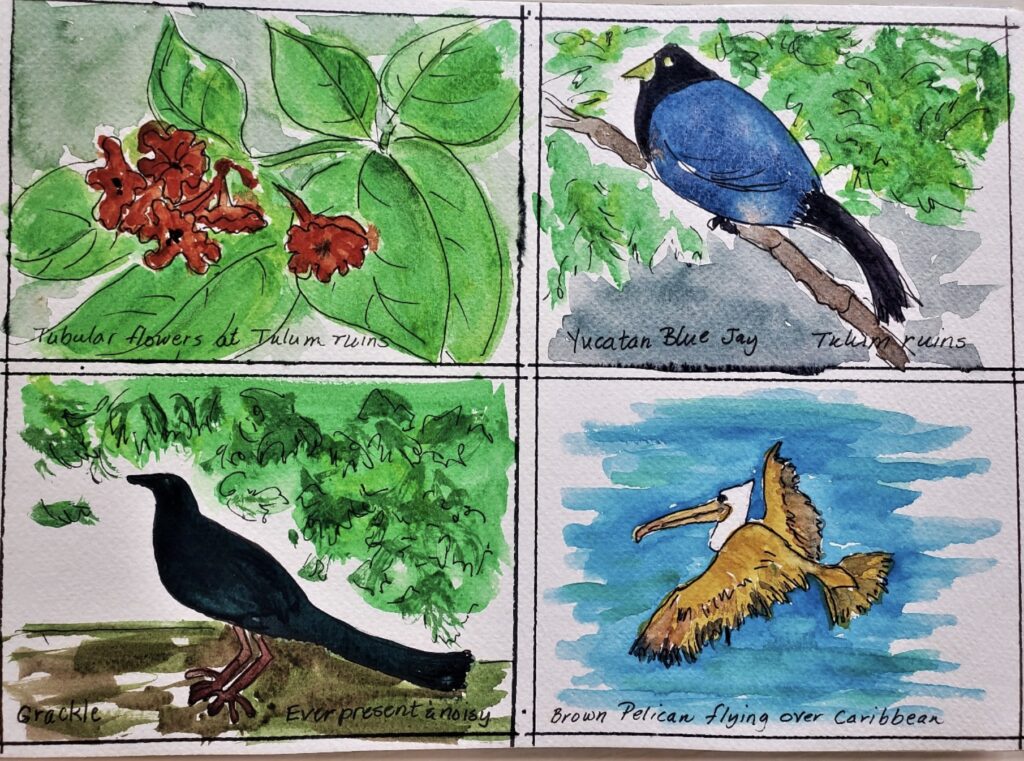
In addition to the well-preserved ruins, I enjoyed the birds and flowers I saw there. The fat Yucatán blue jay was perched on a branch at my eye level and its blue feathers were radiant. The great grackles were ever-present and noisy.
6 – The Ruins of Cobá
I took a taxi inland for an hour to reach the highly recommended ruins of Cobá
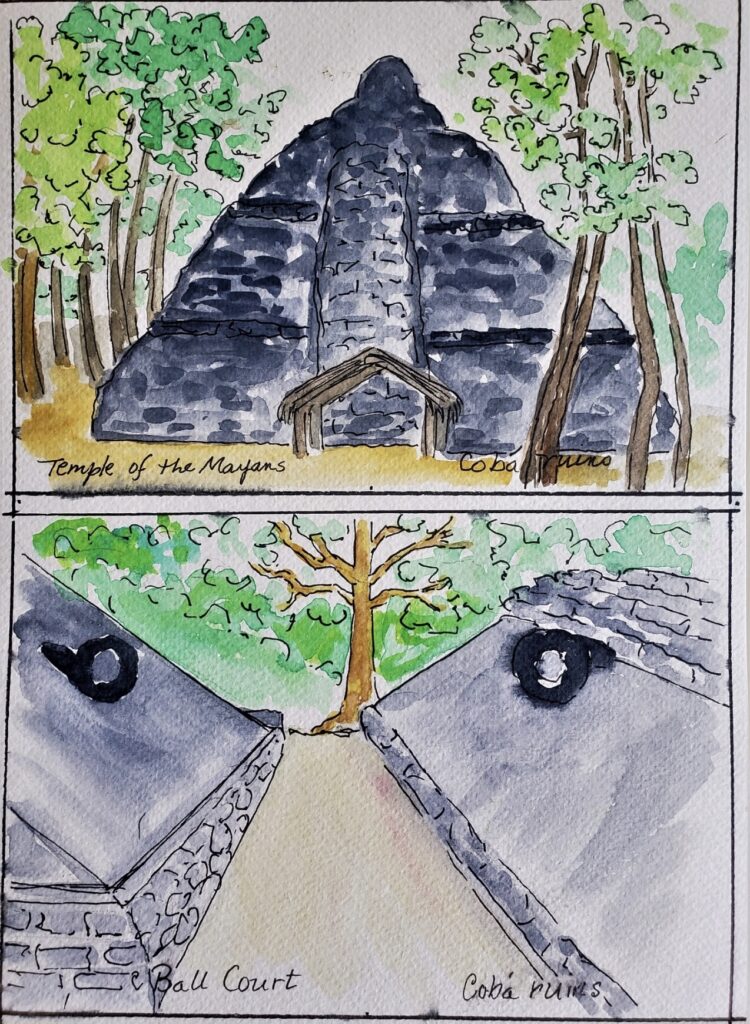
The Temple of the Mayans and the ball court were outstanding.
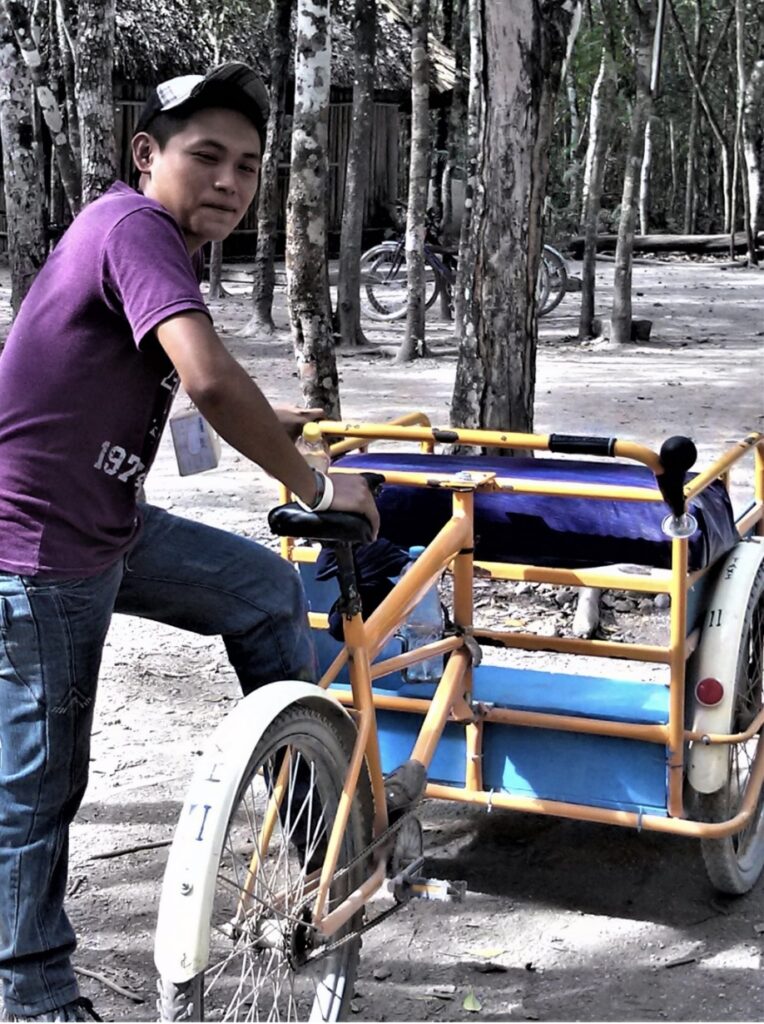
I took a pedi-cab because the heat was so oppressive. My guide was a good-humored young man who filled me in on the ancient ways of the Mayans.
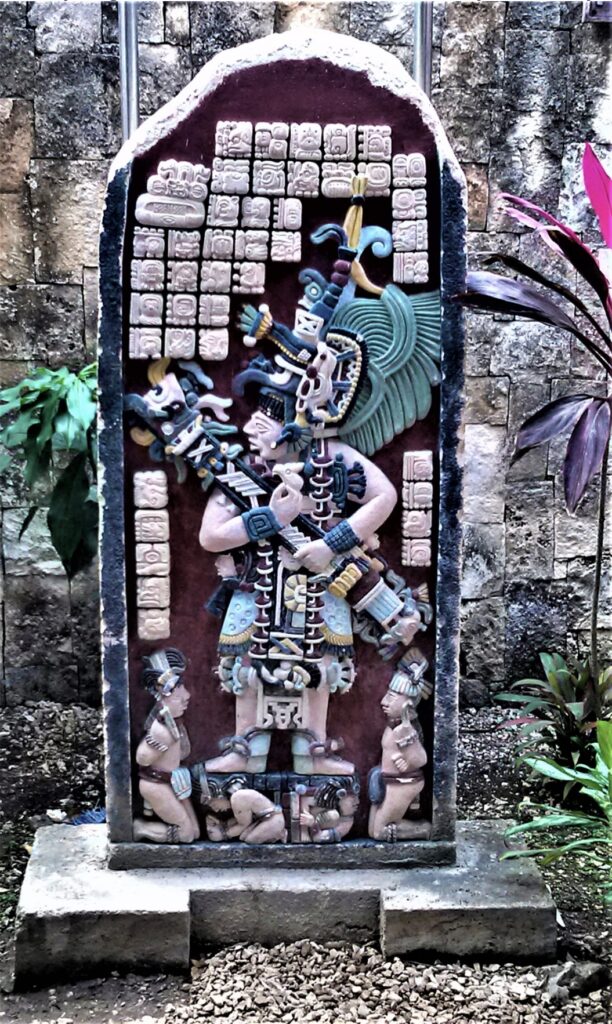
These upright stone stelae at Cobá usually depicted rulers and their history.
7 – Cenotes near Tulum
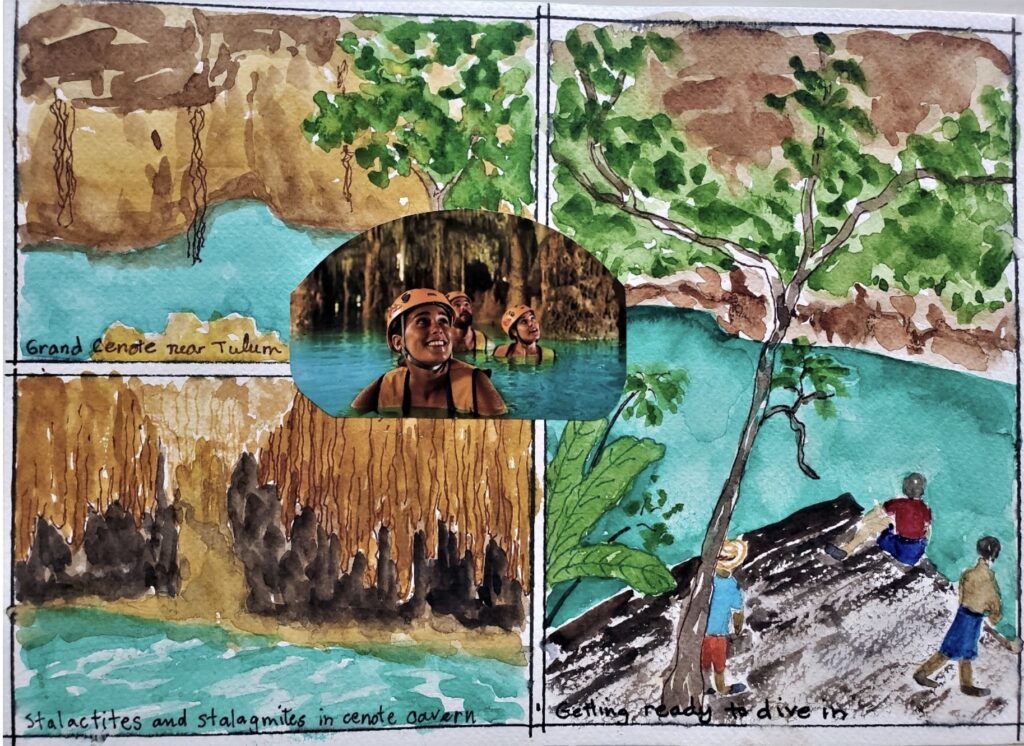
The Gran Cenote, on the outskirts of Tulum, is one of many marvelous underground sinkholes where the collapse of limestone has exposed groundwater.
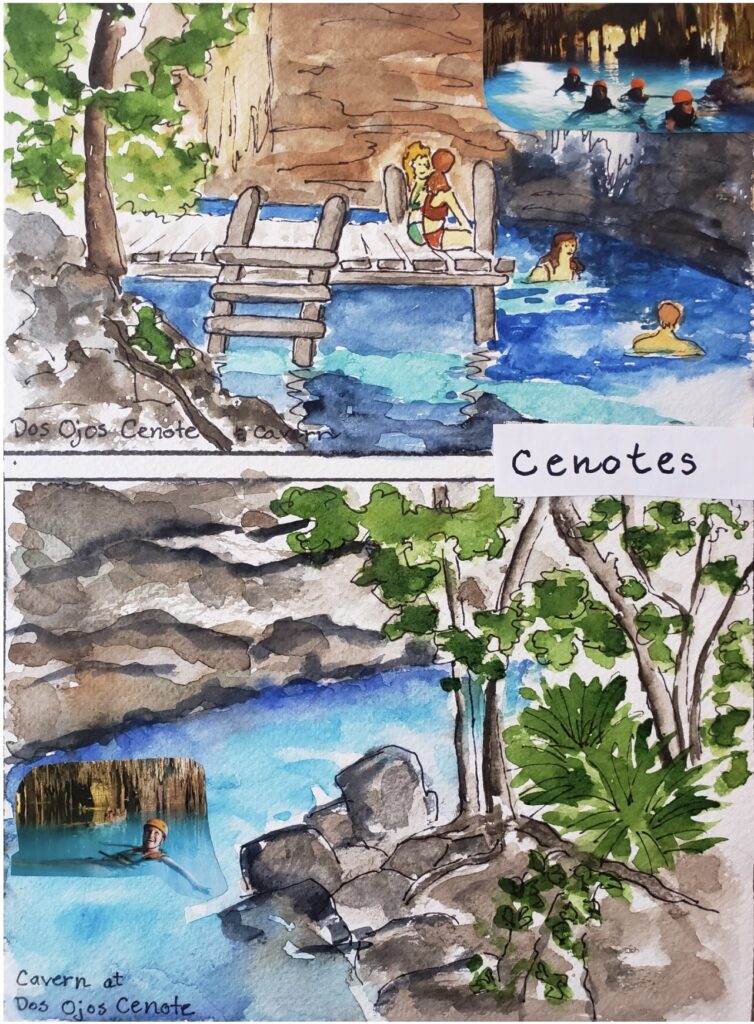
Cenote Dos Ojos is in a vast jungle park with many cenotes interconnected by underground rivers. It’s about a half an hour from Tulum. Swimming was quietly delicious below ground where the temperature was 20 degrees cooler than the surface of the jungle.

I love your blog and paintings. I am also very interested in your suggestions for reading female Latin American writers. My favorite is Laura Esquivel. I’m a good friend of Mary Contreras who shared your blog with me. I live in TJ and hope to meet you one day.
Life is full of surprises! I just discovered the “comments” section of my website. Thanks so much for reading and commenting on my blog – a fresh one is coming soon – probably about the Baja Women’s Conference. I was so glad to meet you at the pre-conference get together in Baja last week. It was such a treasure to be invited as a presenter and to meet wonderful women like you.
Sue McDevitt
Love the combination of your watercolors, words and photos. Those cenotes are really something. And love the stone stelae!
Life is full of surprises! I just discovered the “comments” section of my website. Thanks so much for reading and commenting on my blog. Your note: “Those cenotes are really something” stuck with me.
Hugs, Niyazi